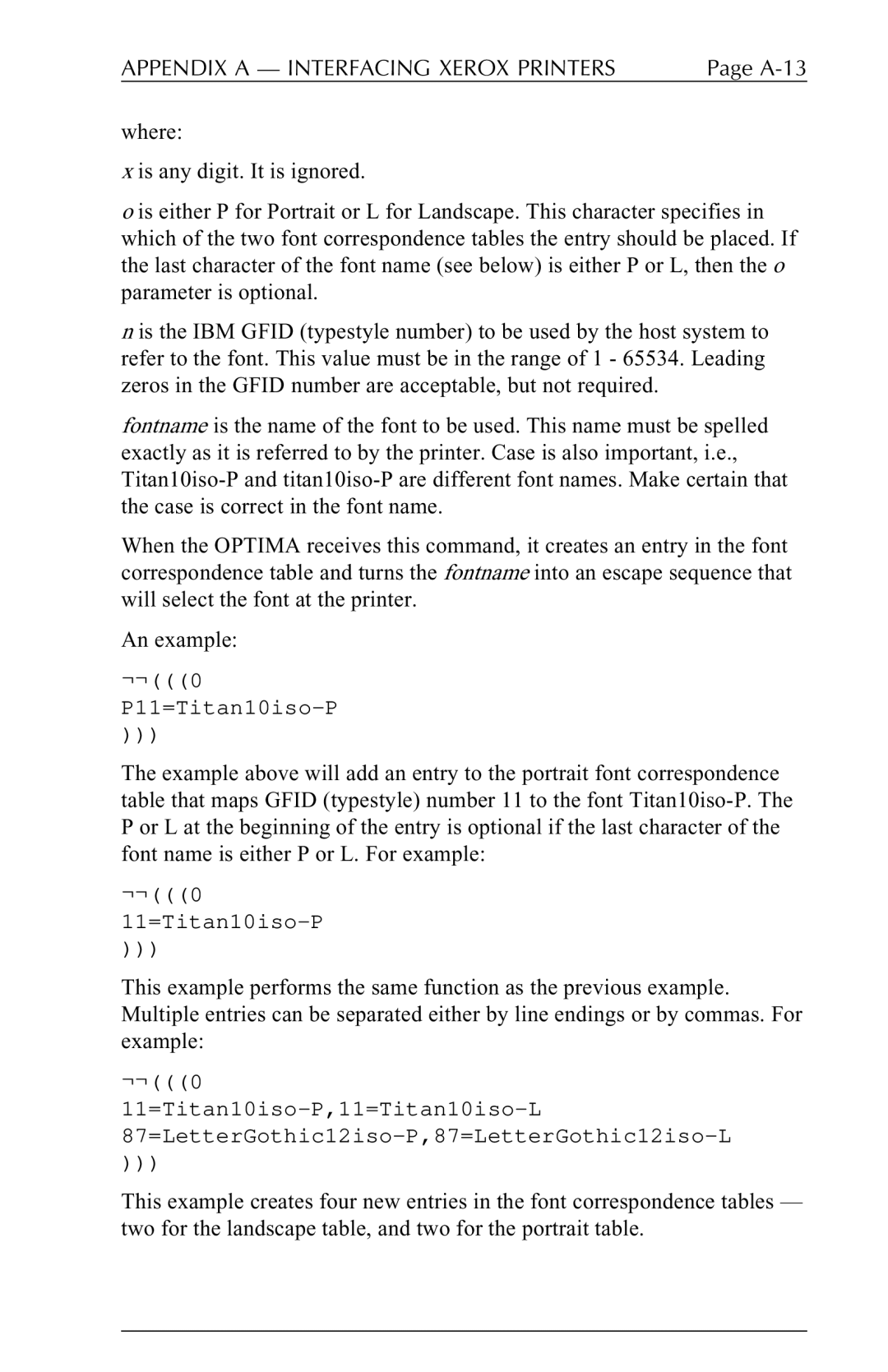APPENDIX A — INTERFACING XEROX PRINTERS | Page |
where:
x is any digit. It is ignored.
o is either P for Portrait or L for Landscape. This character specifies in which of the two font correspondence tables the entry should be placed. If the last character of the font name (see below) is either P or L, then the o parameter is optional.
n is the IBM GFID (typestyle number) to be used by the host system to refer to the font. This value must be in the range of 1 - 65534. Leading zeros in the GFID number are acceptable, but not required.
fontname is the name of the font to be used. This name must be spelled exactly as it is referred to by the printer. Case is also important, i.e.,
When the OPTIMA receives this command, it creates an entry in the font correspondence table and turns the fontname into an escape sequence that will select the font at the printer.
An example:
¬¬(((0 P11=Titan10iso-P
)))
The example above will add an entry to the portrait font correspondence table that maps GFID (typestyle) number 11 to the font
¬¬(((0
)))
This example performs the same function as the previous example. Multiple entries can be separated either by line endings or by commas. For example:
¬¬(((0
)))
This example creates four new entries in the font correspondence tables — two for the landscape table, and two for the portrait table.
